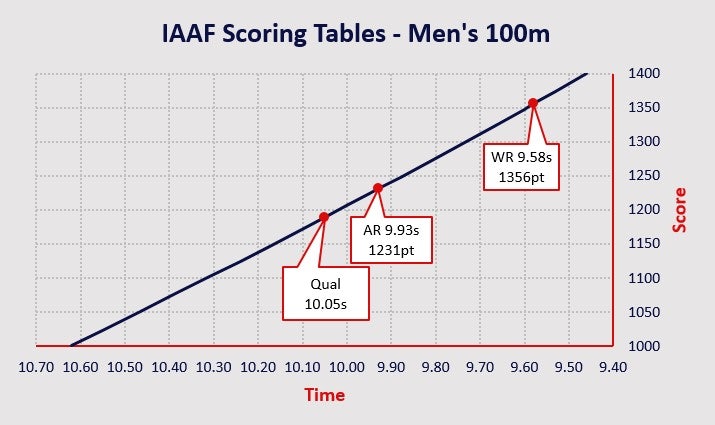The COVID induced break to the Olympic qualifying period ends today, with athletes having until 29 June next year to claim their place for the Tokyo Games.
The qualifying process seeks to fill about half of the quota-sized field in each event through athletes achieving an entry standard, with the remaining places based on the World Athletics Rankings.
A key component of the World Athletics Rankings are the points achieved for placings in various categories of competition. Recently Athletics Oceania and Athletics Australia have announced their calendars, with the five highest ranking point scoring meets of the season being:
- Australian Championships – 12-21 April 2021 (at a venue TBC)
- The Queensland Track Classic – 27 March 2021
- Sydney Track Classic – 13 March 2021
- Sir Graeme Douglas International – 27 February 2021 in Auckland
- International Track Meet – 6 February 2021 in Christchurch
World Athletics have released the Road to Tokyo qualifying tracking tool that provides an up to date listing of the current qualifying calculations.
We have also produced our own tool, the World Athletics Rankings Calculator, which assists in scenario planning for athletes. It does this by automating tasks like looking up the lengthy World Athletics Ranking Tables. You can download the spreadsheet (version 1.1, updated for December) below or at the bottom of this article.
[erforms id=”104″]
How many athletes can represent each country at the Olympic Games?
Nothing has changed with respect to the number of athletes a nation can enter into an event (3), provided all of the athletes have qualified through either of the means available.
The entry standards are much more difficult to achieve than previous qualifying standards. As a sample, the 100m requires a 10.05s (men) or 11.15s (women) performance, compared to 10.16s and 11.32s respectively for the Rio Olympics. However, only half of the expected 56 athletes in each of the 100m events – so 28 – are expected to qualify based on achieving these entry standards. The remaining athletes in the field will qualify based on the World Athletics Rankings.
What are the World Athletics rankings?
As a high level summary, these are rankings based on complex statistical calculations that reward athletes for both their performance and place in a number of competitions over the year, with a higher weighting for places achieved in more significant competitions (as determined by World Athletics).
To break this down, in most events an athlete obtains a Rankings Score based on the average of their top 5 Performance Scores. The exceptions are distance events (3000m Steeplechase and 5000m, requiring 3 Performance Scores) and Marathon, Walks and Multi Events (where only the top 2 scores are used). We’ll focus this article on the majority of events.
How is a Performance Score determined?
There are two factors that make up a single Performance Score: the Result Score and the Placing Score. These are simply added together.
The Result Score is based on the World Athletics Ranking Tables for Athletics (statistical tables in a 368 page PDF available here, or automated via our spreadsheet tool). They are similar to scoring tables used for the Decathlon and are based on detailed statistical modelling and are revised every three years.
One of the characteristics of the Scoring Tables is that they are progressive i.e. the same margin of improvement scores an increasing number of points as performance improves. Put more simply with an example, a tenth of a second improvement in the 100m from 10.20s to 10.10s sees a larger increase in the number of points obtained than an increase from 10.30s to 10.20s, recognising that the former improvement is a more difficult and valuable achievement.
Although they are progressive in nature, at the elite end of the sport the tables look relatively linear, as the below graph shows.

There are also various amendments to the Results Score to take into effect wind conditions i.e. additional points for performances into headwinds and deductions for tailwinds – meaning that wind-assisted performances can still be considered for Result Scores, Performance Scores and ultimately Ranking Scores.
Placing Scores are the most significant new element of the qualifying pathway. Points are obtained based on a combination of the placing obtained and the category of competition in which they are obtained. A win at an Olympic Games or World Championships in more valuable than a win at a National Championship. In fact, according to the Placing Score table, 12th place at a World Championships is equivalent to a win at a National Championship. We’ve represented all of the Placing Scores graphically below.

What do all of these categories of competition mean?
The meets during the domestic season range from category B through to category F.
An exhaustive summary and calendar for 2020 is available on the World Athletics website and will presumably be updated soon for 2021, but here’s a snapshot of what it means for meets Australians often compete in:
OW Olympics and World Championships
DF Diamond League Final
GW Diamond League, World Indoor, World Cross Country
GL Oceania Championships
A Commonwealth Games, Continental Tour Gold, World Indoor Tour
B Nationals, Continental Tour Silver (Queensland Track Classic)
C Continental Tour Bronze (Sydney Track Classic and the Christchurch and Auckland meets), NCAA Outdoor Championships, lots of European meets
D – Oceania Permit Meetings (the other main one-day meets on the Australian calendar)
E – NCAA Indoors, designated national permit meetings (State Championships)
F – National permit meetings (other selected meets, such as some interclub meets)
How does this work in practice?
To explore this in detail with working examples you can download our World Athletics Rankings Calculator, which includes a consolidated calendar of Australian and Oceania permit meets that are category D and above.

[erforms id=”104″]
Latest posts:
- Davies and Rayner win third Zatopek crowns; Myers breaks own junior 3000m record
- Record holders headline Zatopek:10
- Gout the star but plethora of talent at Australian All Schools
- The Australian Athletics Instagram Elite: Top Influencers of 2024
- World Athletics Ultimate Championships Launched
Related Posts










